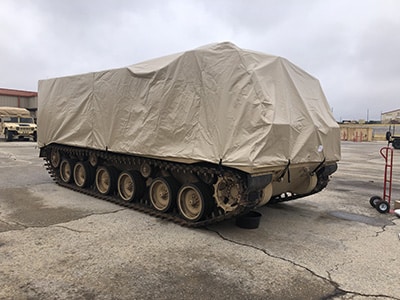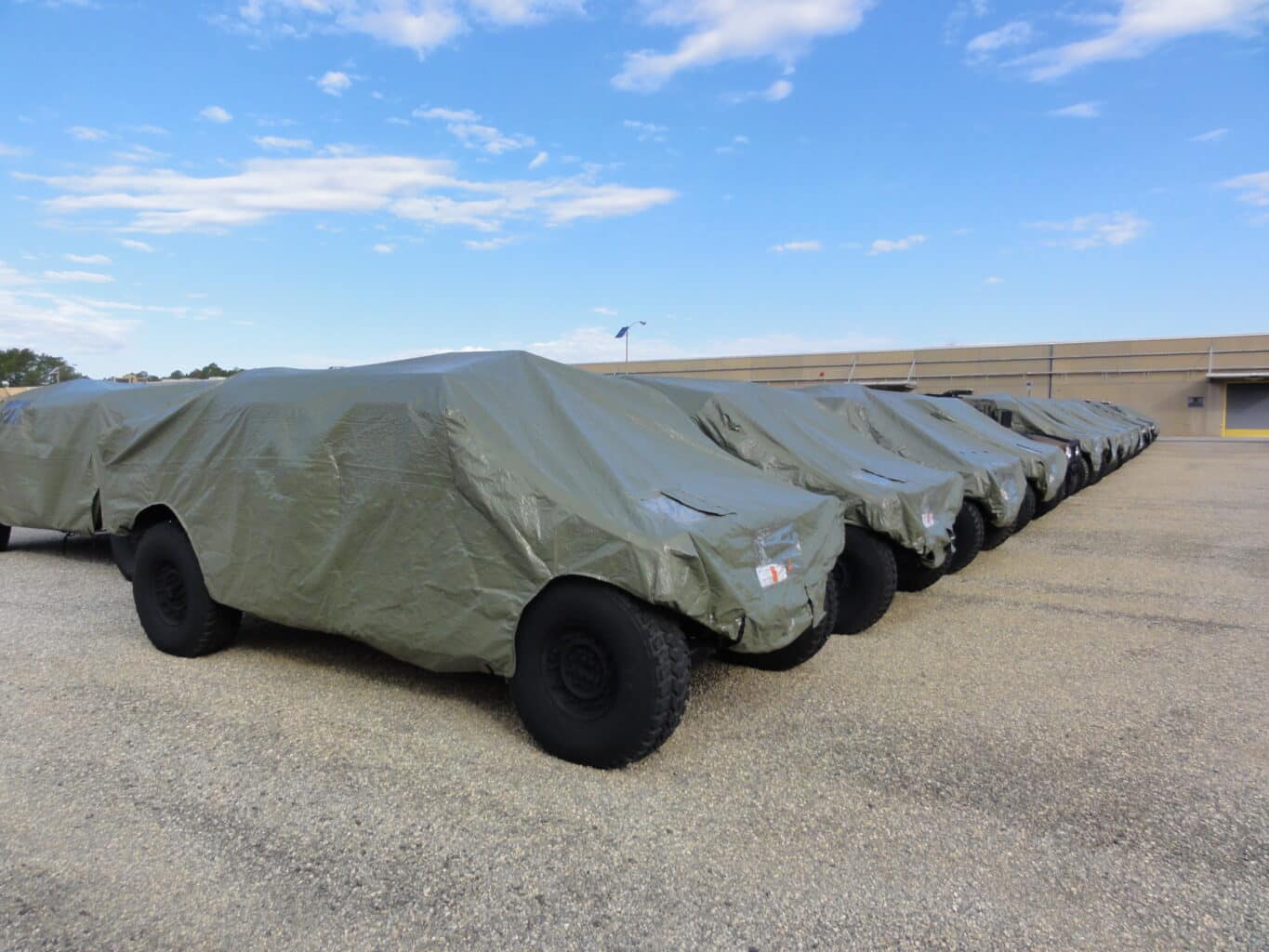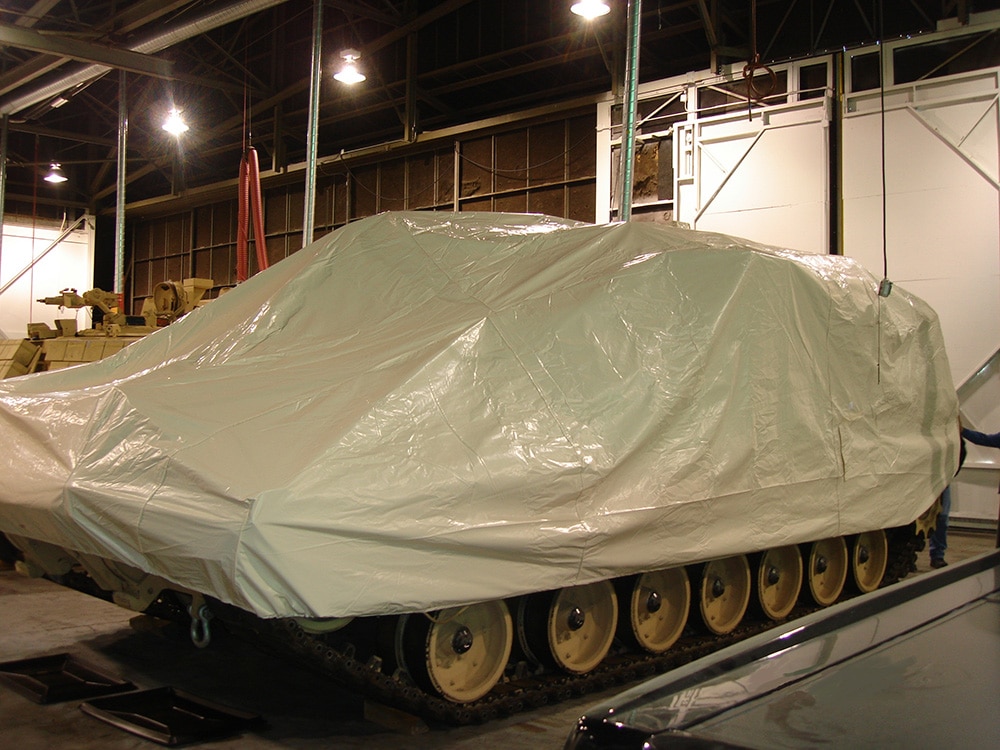U.S. Army Ground Systems: A Business Analysis for Equipment Covers
Other
The U.S. Army (Active, National Guard and Reserve) experiences reduced readiness rates and increased corrective maintenance actions – as much as four times higher in areas of high temperature, high humidity and high salinity. In order to objectively quantify the problem, the Army Corrosion Control and Prevention Executive directed preparation of a Business Case Analysis (BCA).
The BCA evaluated cost effectiveness of equipment covers against other corrosion prevention and control solutions and compared various methods for issuing covers to help Program Managers and Product Support Managers make decisions on maintenance and product support planning.
The BCA [1] concluded that:
• Covers work at any location.
• They have an average Return on Investment (ROI) of 19:1 in normal environments and even higher in harsh environments.
• Everything not stored or parked in a building should have a cover.
Background:
A cover’s main purpose is to keep liquids (e.g., rainwater, snow, ice, etc.) and contaminants (e.g., dust, debris, dirt, etc.) away from the equipment as well as shielding it from damaging ultraviolet (UV) rays [2]. Commercially available covers can be single-layered (like a canvas or vinyl rectangular shaped tarpaulin using ties or fasteners) or multi-layered, fitted or generic. Custom-fitted covers are fabricated to fit specific sizes and shapes of equipment. Multi-layer covers usually include three to four layers of different materials, such as a waterproof outer shell and a wicking inner layer.
The BCA used a corrosion-related corrective maintenance cost based on the 2009 Office of the Secretary of Defense Office of Corrosion Policy and Oversight Cost of Corrosion study report [3]. The report contains a list of the Top 20 Contributors to Army Ground Vehicle Corrosion Costs for Fiscal Year 2007 (FY07), including the total (corrective and preventive) cost of corrosion-related maintenance for each system listed – with a median cost of $8,842 – assumed to be the total corrosion-related annual maintenance cost for a typical ground system. Based on the Cost of Corrosion study, 52.2% of corrosion costs are corrective in nature, so the median cost of total corrosion-related maintenance is estimated at $4,616 per system. $5.400 in FY17 dollars.
Assuming a 20 year lifespan for ground systems, the ROI calculated for covers is 19:1 based on a two-year cover life. The ROI increases if the cover lasts longer. This is exceeded only by currently constructed shed storage and general-purpose warehouse. The cost to build storage and then supply both heat and power results in an unfavorable ROI when compared to the above three options.

Why Choose a Custom Fit Cover?
Taking the war fighters or end users into account, custom-fitted covers can provide additional value in terms of ease of use and perception of the importance of the item. How soldiers react to equipment they consider valuable may factor in a way that the ROI calculation does not capture. For example, if the least expensive cover on the market is purchased, soldiers using them may not put as much care into how they handle or use the covers and installation can be much more difficult. Additionally, if custom-fitted covers are purchased, leadership may put increased emphasis on using, storing, cleaning and handling the covers properly.
Again—the BCA concludes that:
• Covers reduce corrosion and protect equipment.
• Covers have an average ROI of 19:1. In more environmentally difficult regions and on more expensive equipment, the ROI for covers is higher.
• Covers always provide benefit regardless of location.
• If equipment is stored outside, covers should be implemented.
• Custom-fitted covers are less likely to allow salt, sand, and other contaminants reach the equipment than standard vinyl tarps.
The BCA further recommends a course of action that gives decision-makers the ability to choose the cover that best fits their situation.


One final thought:
In order for equipment covers to be effective, for which the BCA clearly documents a need, Army leadership at all levels must require, support and enforce their use through policy, funding, training and continued emphasis.
References:
1. Equipment Storage Methods for Corrosion Prevention and Control” A Business Case Analysis on Equipment Covers for Army Ground Systems, Meghan McGinley, Jensen Hughes Paper No. 2017- 197831
2. Sharman, D. J., Washburn, M., Ozol, S., The Wide Ranging Benefits of Corrosion Inhibitors, The Department of Defense Allied Nations Technical Corrosion Conference, August 2017
3. The Annual Cost of Corrosion for Army Ground Vehicles, 2008-2009 Update, LMI for OSD CPO, May 2009.


